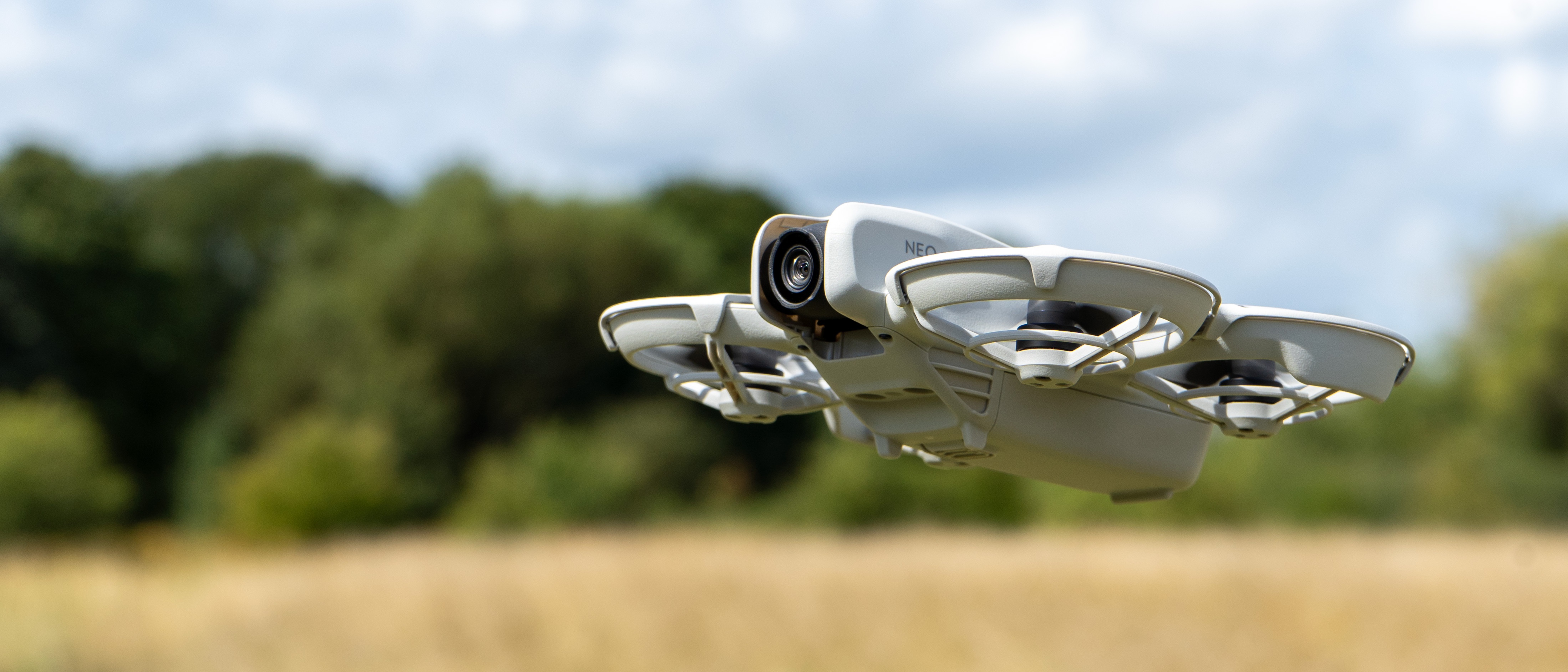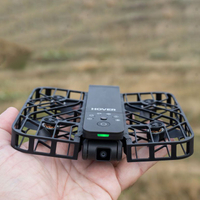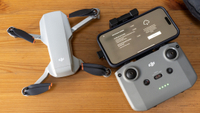Digital Camera World Verdict
The DJI Neo isn't perfect but it's aggressively priced and surprisingly rugged, making it an ideal choice for those more concerned with getting some cool shots than caring for a drone. Enticements don't stop there, thanks to multiple control options – including FPV – but there is still room for improvement.
Pros
- +
Can be used without a controller
- +
4K camera takes decent video
- +
Onboard memory is easy to access
- +
Control options and even DJI FPV compatibility
Cons
- -
Does not fold for travel
- -
Skintones could be somewhat prone to exaggeration
- -
Subject tracking can be confused by close passes
- -
We had trouble with the early software
Why you can trust Digital Camera World
Let's not beat around the bush, at its core the DJI Neo is built around an idea borrowed from another company. The question with this drone is not how revolutionary it is because – for once – DJI aren't really the innovators here. The question is "Has DJI done it better?"
From that perspective, the existing competition which DJI is looking to unseat is the HoverAir X1, which I reviewed last year, though history records a much less impressive 'selfie drone' or 'follow-me drone' (I can't decide what they're called either) from Snapchat! There are other ways we can look at this drone though, because it does a lot!
With DJI in the unfamiliar position of being behind the market, they've gone all-out in terms of features, including a 4K camera and the option to control the craft 'properly' using one of the company's RC-N3 controllers – in addition to all the cleverness of automatically orbiting the owner.
That means you can buy the drone as a 'selfie drone', using AI and/or an app to follow you, or you can opt to fly it more like a conventional drone. That's flexibility, and it's not something the HoverAir X1 does out of the box.
That perhaps hints at another of DJI's legacies – the Tello drone – now very long in the tooth, but still a popular toy/beginners drone. Some will reasonably be asking whether this is a successor which is safe (and even educational) for children.
That feels like one drone trying to be at least three – can it manage it?
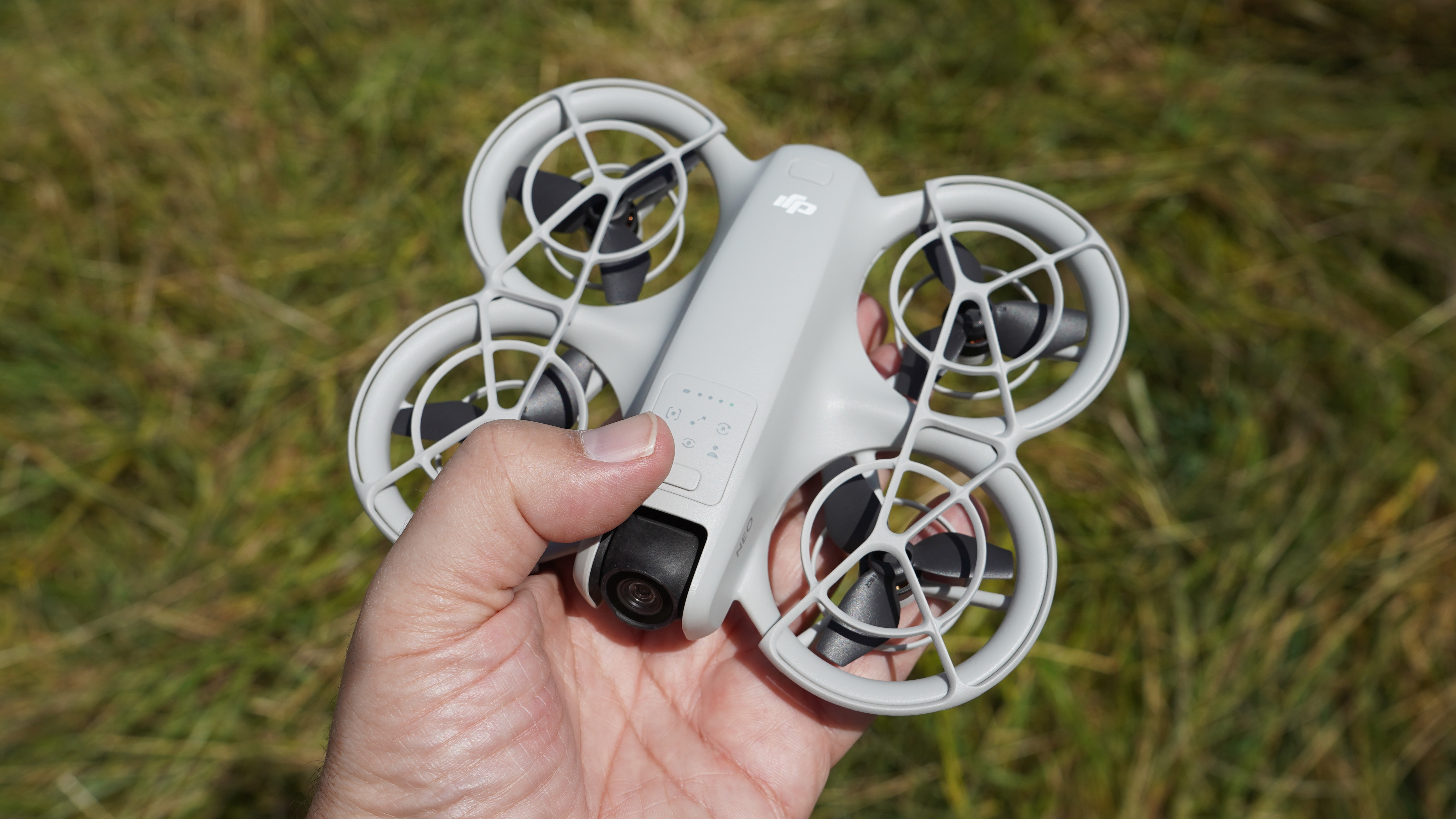
DJI Neo: Specifications
| Take off weight | 135g / 0.3 pound |
| Dimensions | 130 x 157 x 48.5mm (5.1 x 6.2 x 1.8 inch) |
| Sensor size | 1/2-inch sensor |
| Video max | 4K 30fps |
| Picture max | 12 megapixels |
| Flight time | 17 min (theory) with the prop guards still fitted |
| Range | 10km / 6 miles (though limited to wi-fi range when controlled by phone) |
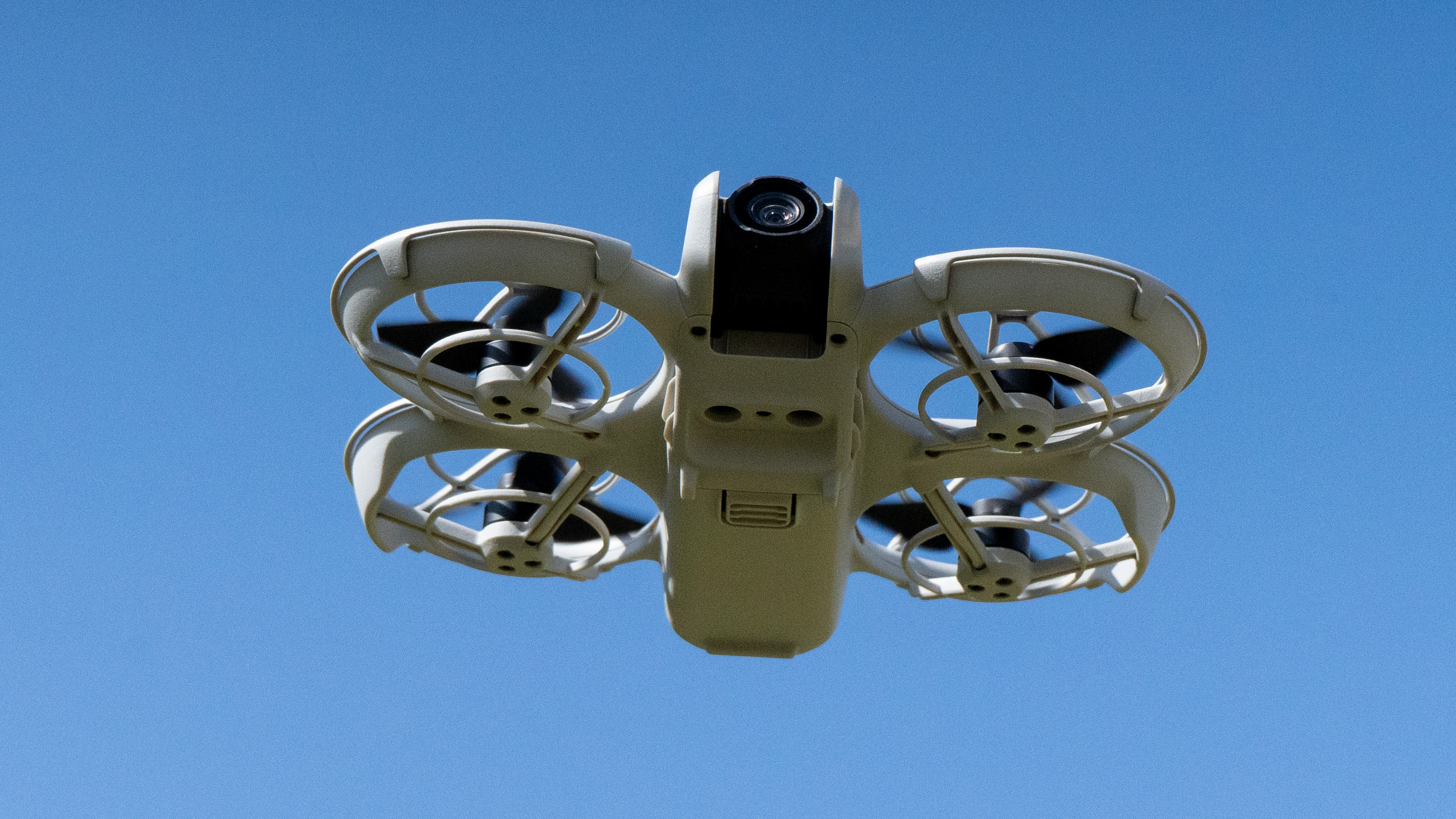
DJI Neo: Price & Availability
This drone is being sold in two bundles; standalone at $199 / £169 / AU$299, which makes it a very tempting proposition, though the only control beyond AI following will be with your phone.
Interestingly the bundles are different in the USA – where a 'Neo Combo' will offer 3 batteries for $289 (very tempting) – from the rest of the world. The 'Fly More Combo' adds a RC-N3 remote control but comes in at £299 / AU$539 / €349 which is an investment on a par with a more traditional drone; still decent value.
Those interested in FPV will need to buy the DJI FPV accessories separately and they aren't cheap – DJI Goggles 3 are $499.
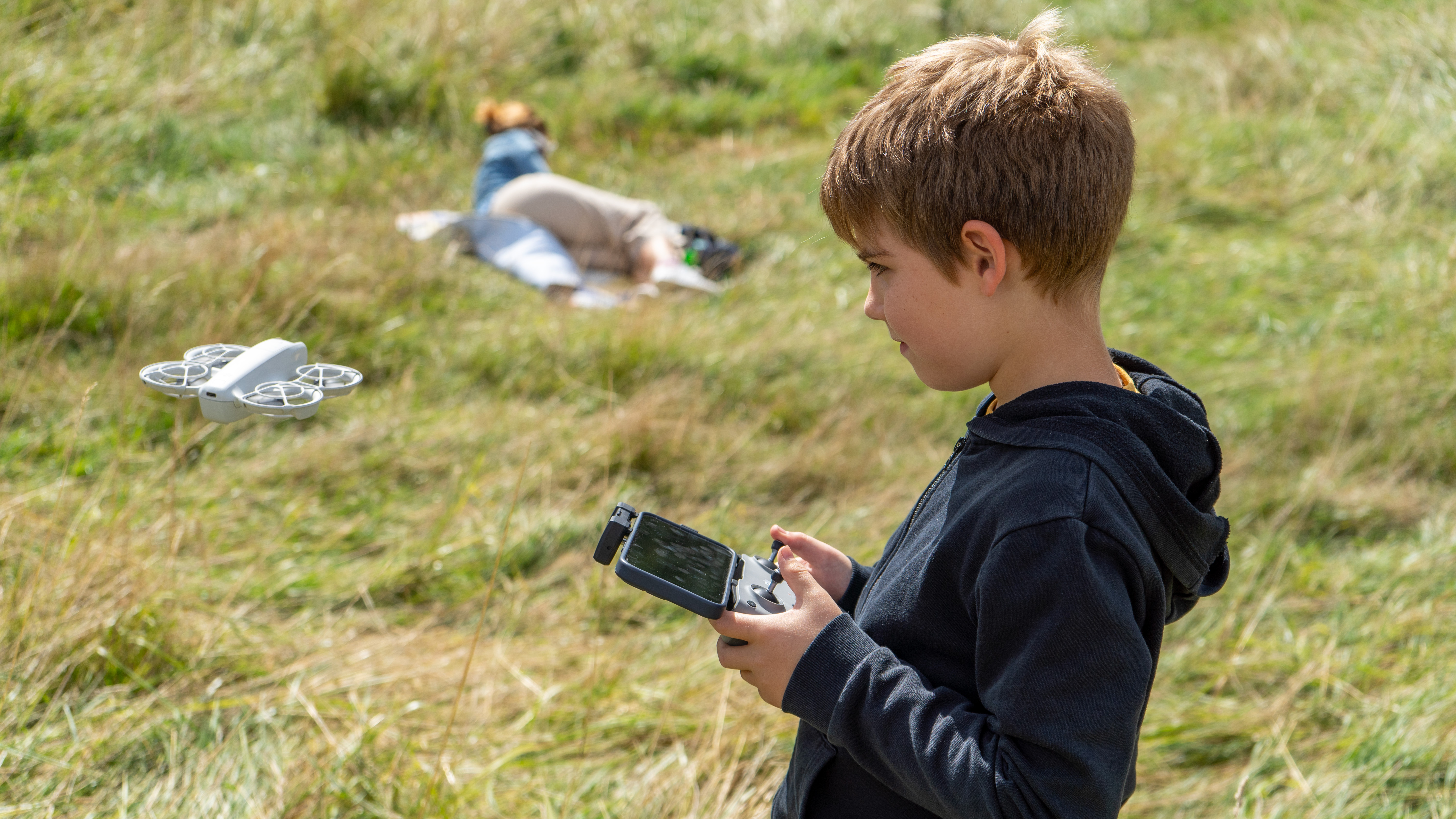
DJI Neo: Design & Handling
DJI have opted for a rigid frame for the Neo which puts the four props in whoop-like vents, not unlike a larger version of a toy drone but built from the same matt grey plastic familiar from their Mini series drones. Around the ducted propellors are removable guards which clip on to the frame and – though they look like afterthoughts – are in fact extremely difficult to remove while at the same time providing an additional replaceable rim to the edge as well guards.
This might not be as elegant as the book-fold of the HoverAir, and it does not pack up as discretely, but it is very robust. At the rear is a USB-C port for charging and downloading of videos and images; around 24GB seem to be available onboard.
There are two buttons on the drone, a power switch at the back and a mode/take off switch at the front. Tiny indicator lights and a speaker tell you what you have selected as you choose mode (or advise why a failure has occurred).
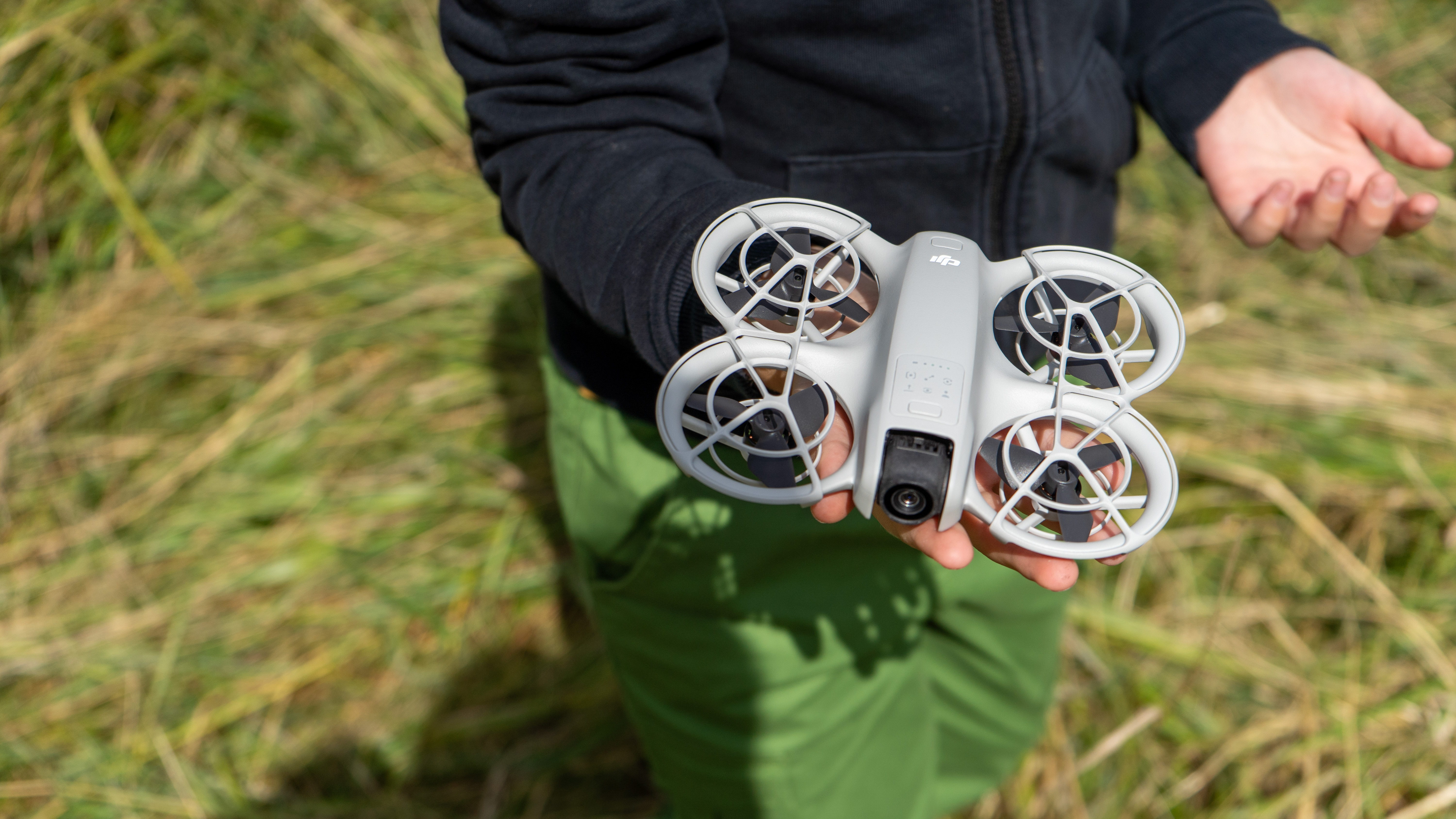
The horizontally-framed camera is mounted on a 1-axis gimbal – a technology sufficient for DJI's Avata droes – and protected from incident on both sides by the frame design.
That incident, however, wasn't easy to make come about. In my testing of a pre-launch model, the drone was straightforward to launch if you were able to hold it fairly level. For me, this was something I could manage one-handed, just.
After pairing with the app in my phone (and ignoring the separate controller DJI lent me at first), I was invited to follow a tutorial to get a basic grounding in operation. You don't need the phone, but it is helpful as, within wi-fi range, it can give you a live preview and even act as a remote control.
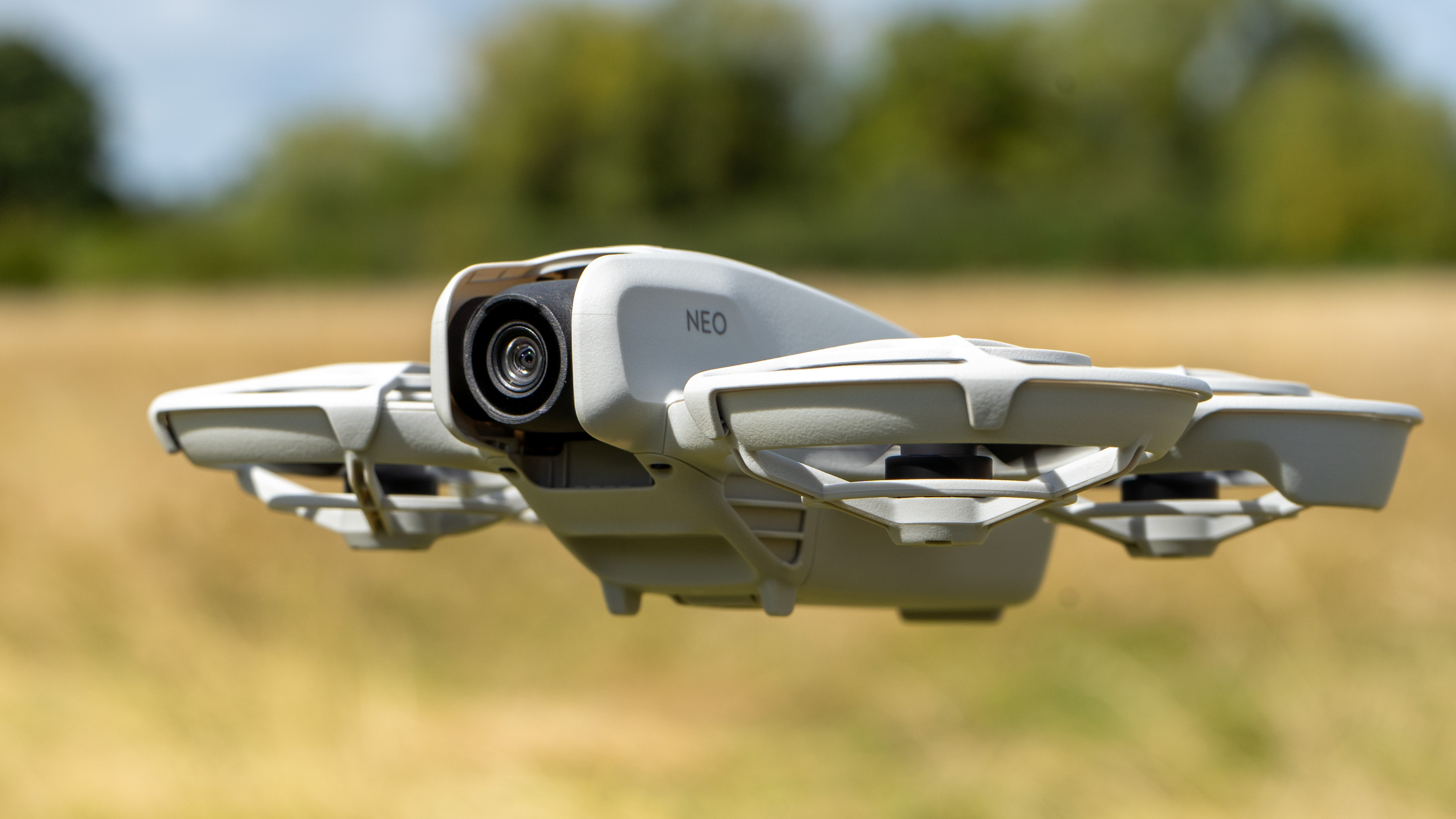
I was also impressed by how reliably the drone seemed to detect my extended arm and flat hand and decided to land on it. Admittedly I've landed a few drones on my palm before, but it doesn't feel risky. Even my eight-year-old son managed it after a few attempts, but he was more cautious of it; the key is confidence!
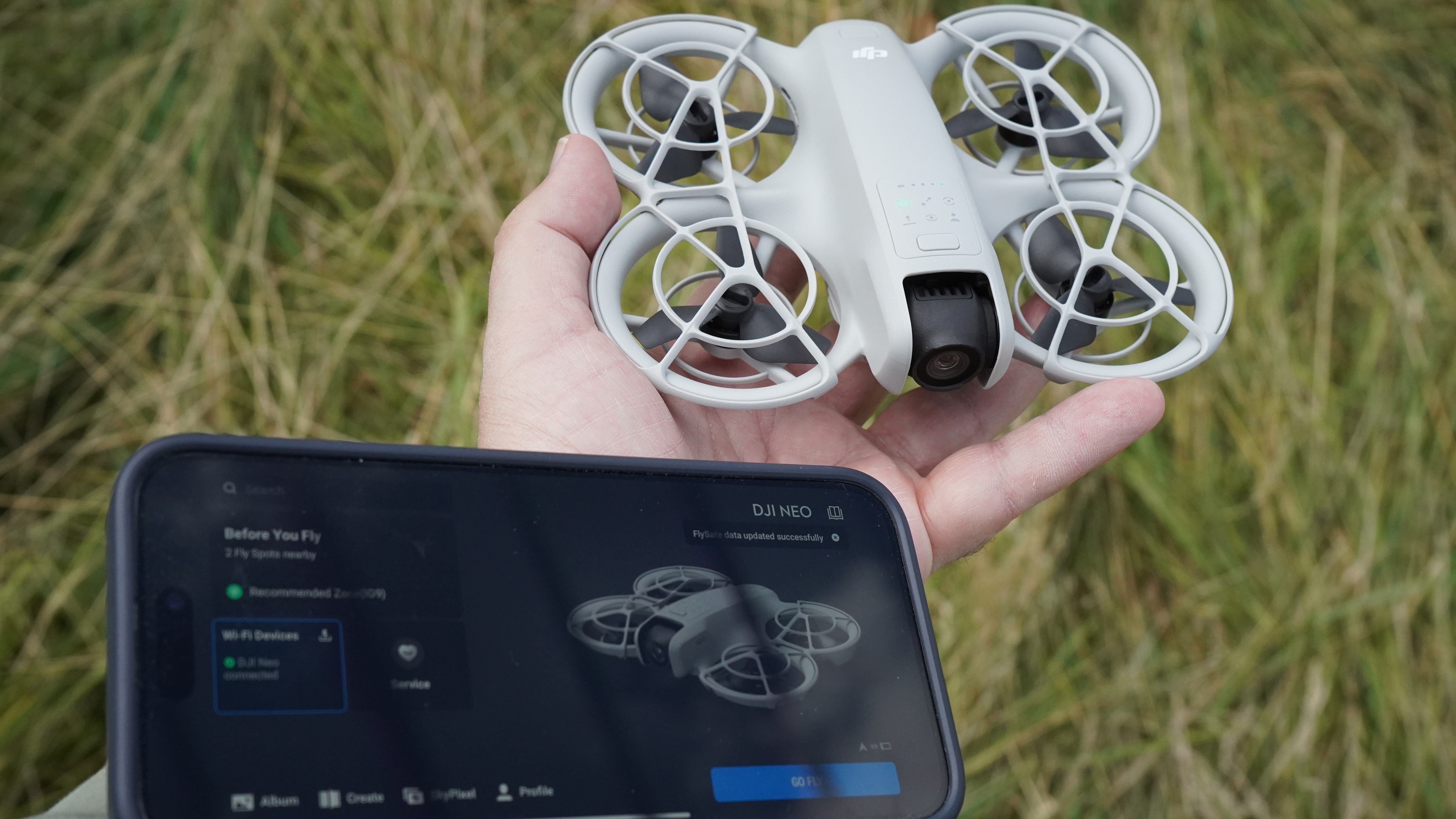
DJI Neo: Controls
When it came time to test the controller, I was a little frustrated that in the test version of the software I tried it resolutely stuck to a portrait mode and the app seemed to make no acknowledgement of the presence of DJI's robust RC-N3 controller.
This meant flying the drone with the phone clipped in less than useless (my iPhone 15 Pro Max, like most phones, will only clip in horizontally). Somehow, I was expecting to see a screen-filling live view as on other DJI drones; perhaps this option is coming.
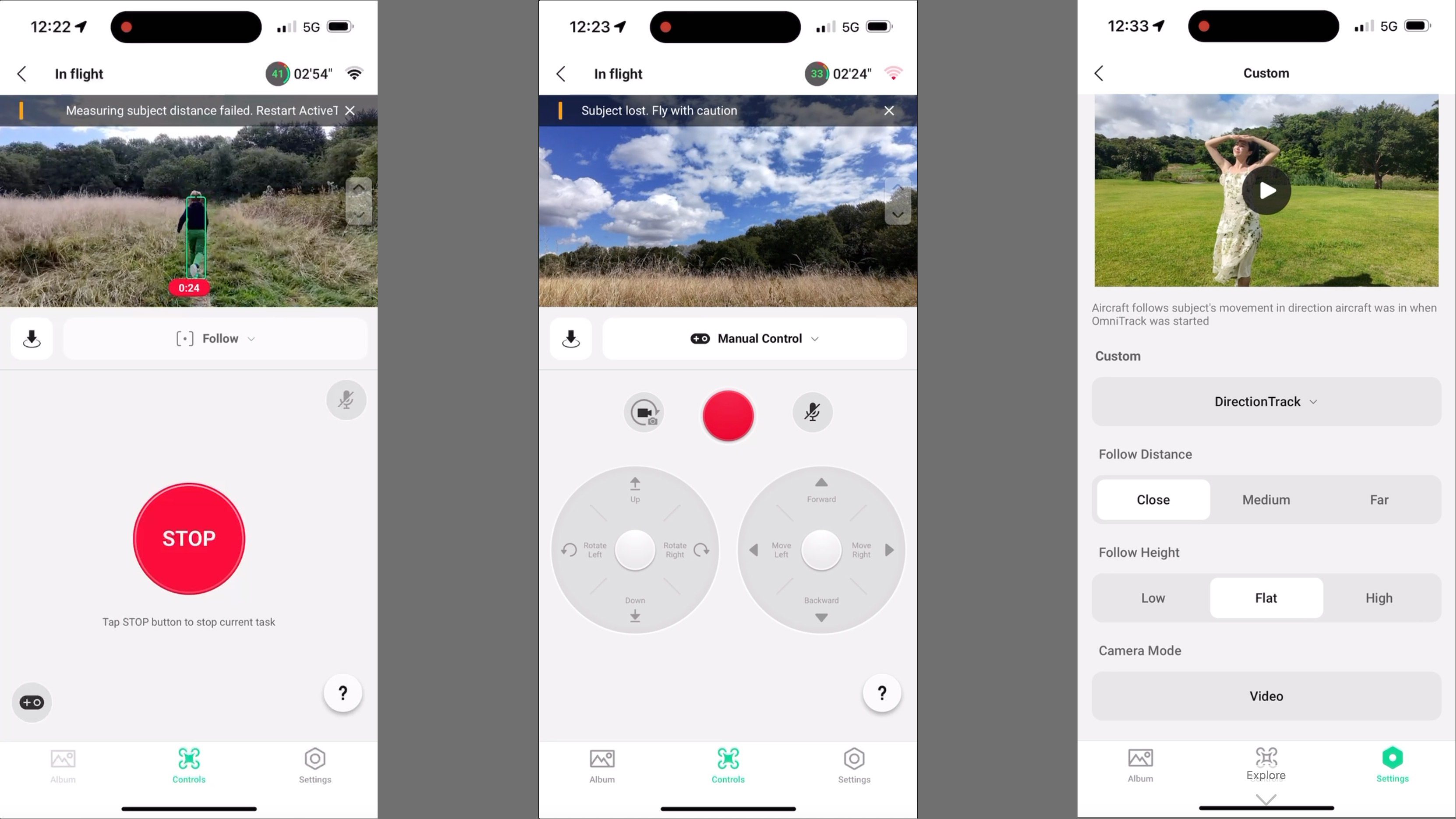
The DJI Fly app's controls for the new drone felt to be configured to be friendly for a portriat-format generation, which didn't seem to make best-use to me. I tried turning the phone horizontally (which is the arrangement of the initial screens) but nothing happened.
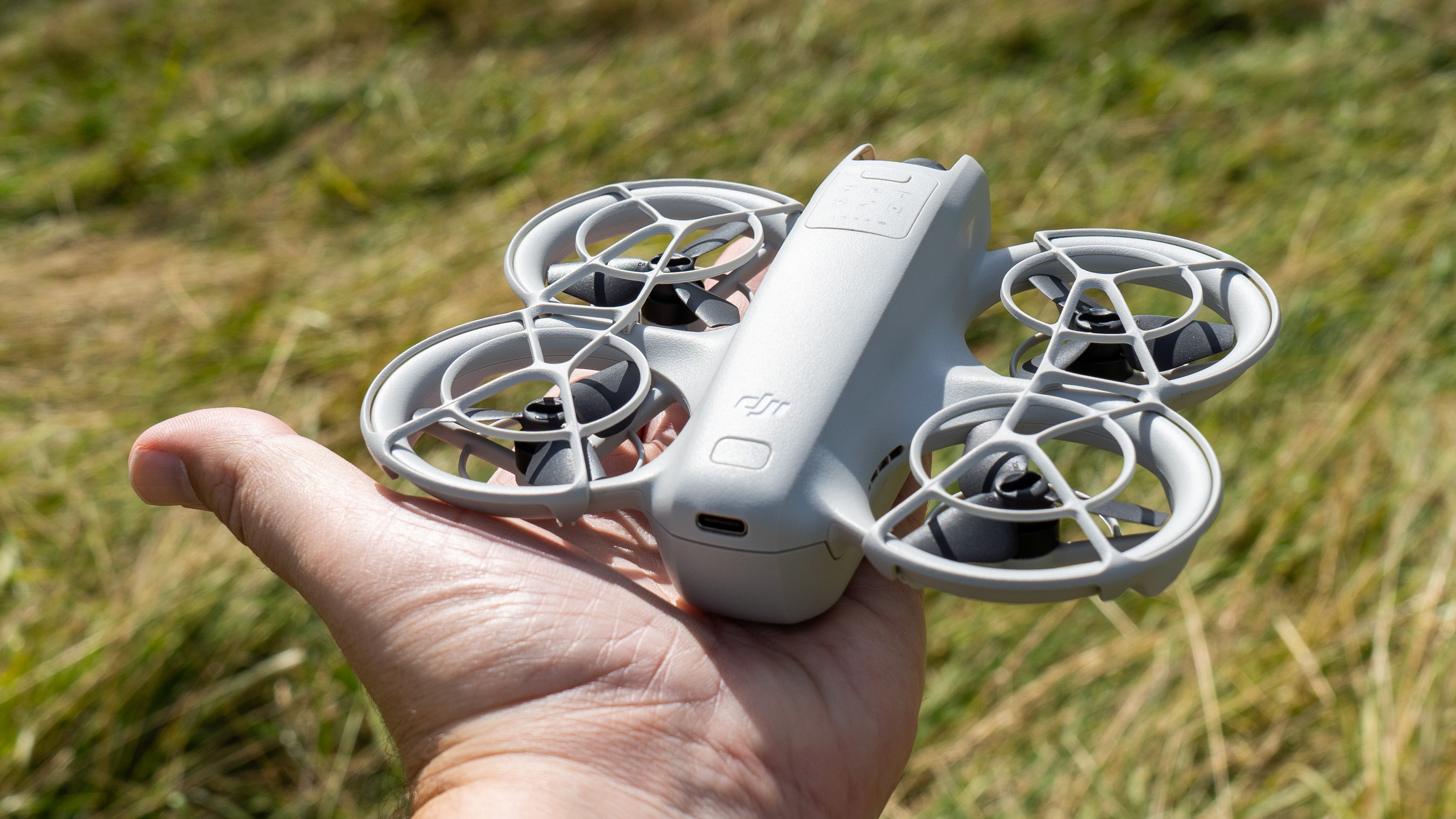
DJI Neo: Performance
Overall the image quality is good but not outstanding. The camera might be 4K but it's not physically massive, so don't expect screen-filling glory. Of more concern to my eyes was the exaggerated saturation, especially in the blues to my eye, but this kind of thing can be considered a matter of taste – there are many who feel it helps video, especially shorts, stand out in social media and that, no doubt, is where a selfie drone's output is destined to end up.
When it came to stills definition, the images seemed a tad disappointing in comparison to DJI's usual drones – even the 'ultralights' at 249g – but they're far superior to the old Tello series.
In both photo and video modes the camera also seems to make some quick exposure changes; that means it might be hard to find consistency between your clips and images, but should ensure detail in any one piece of content.
When it comes to the subject tracking, the drone seemed very capable of keeping up with me, a lumbering man in his mid-forties carrying rather too much extra weight, but whne challenged with my son it did meet its match! The tracking follows him fine until he turns and runs past the drone a little too fast; the device fails to turn quickly enough and then rather than turn and re-acquire him it just gives up and hovers. This happened a few times in similar tests.
Flight times didn't quite seem to live up to the theoretical max either, and if you're relying on the AI approach bear in mind much of the battery time will be eaten up landing and selecting another option.
DJI Neo: Samples
When I tested the DJI Neo (and of course especially when you're using the automated flight feature) there isn't a lot of opportunity for manual camera settings. Clouds are coming and going, I admit, but notice in the sample images the variety of tones the drone manages to select in just a few pics:


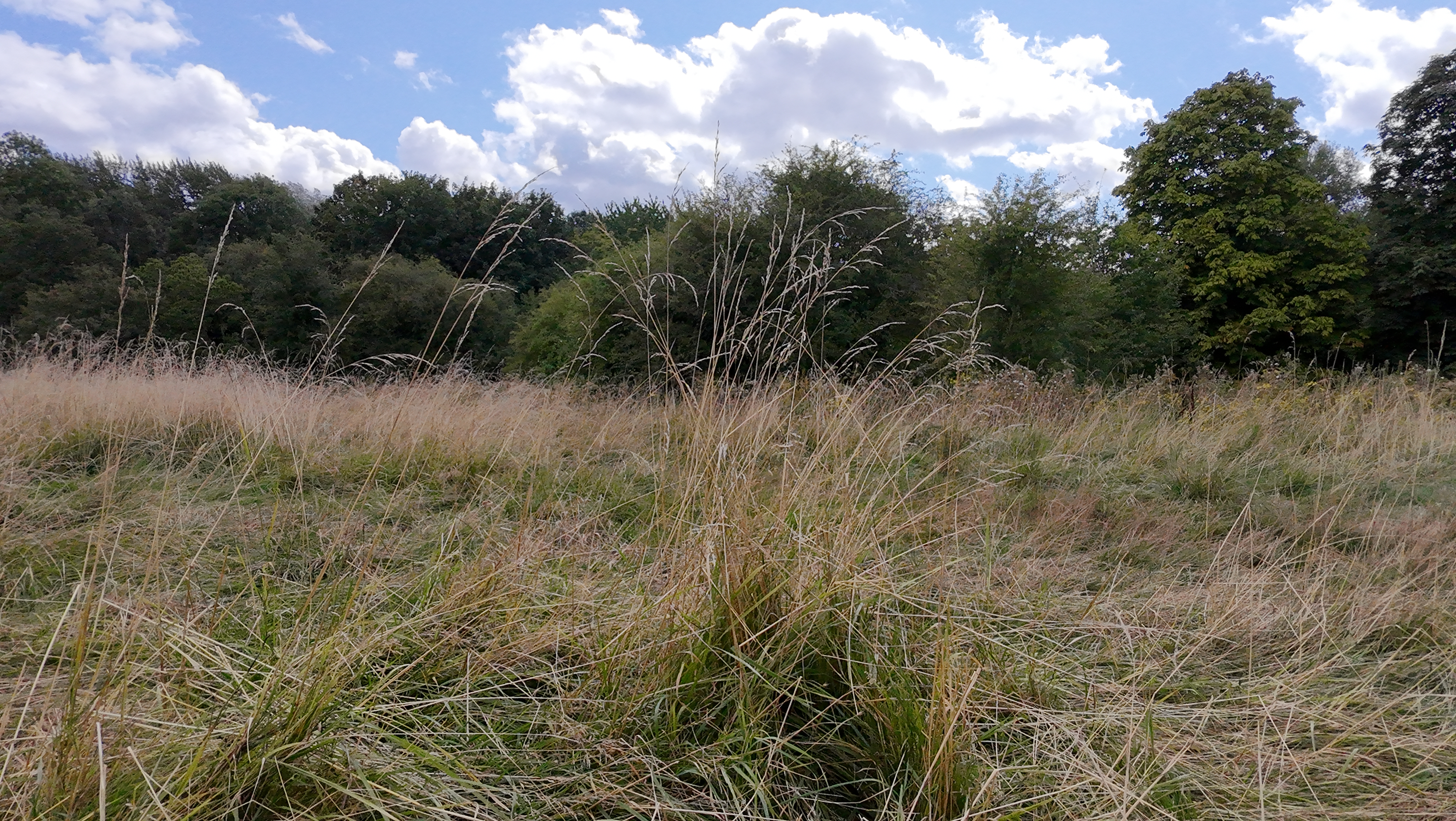
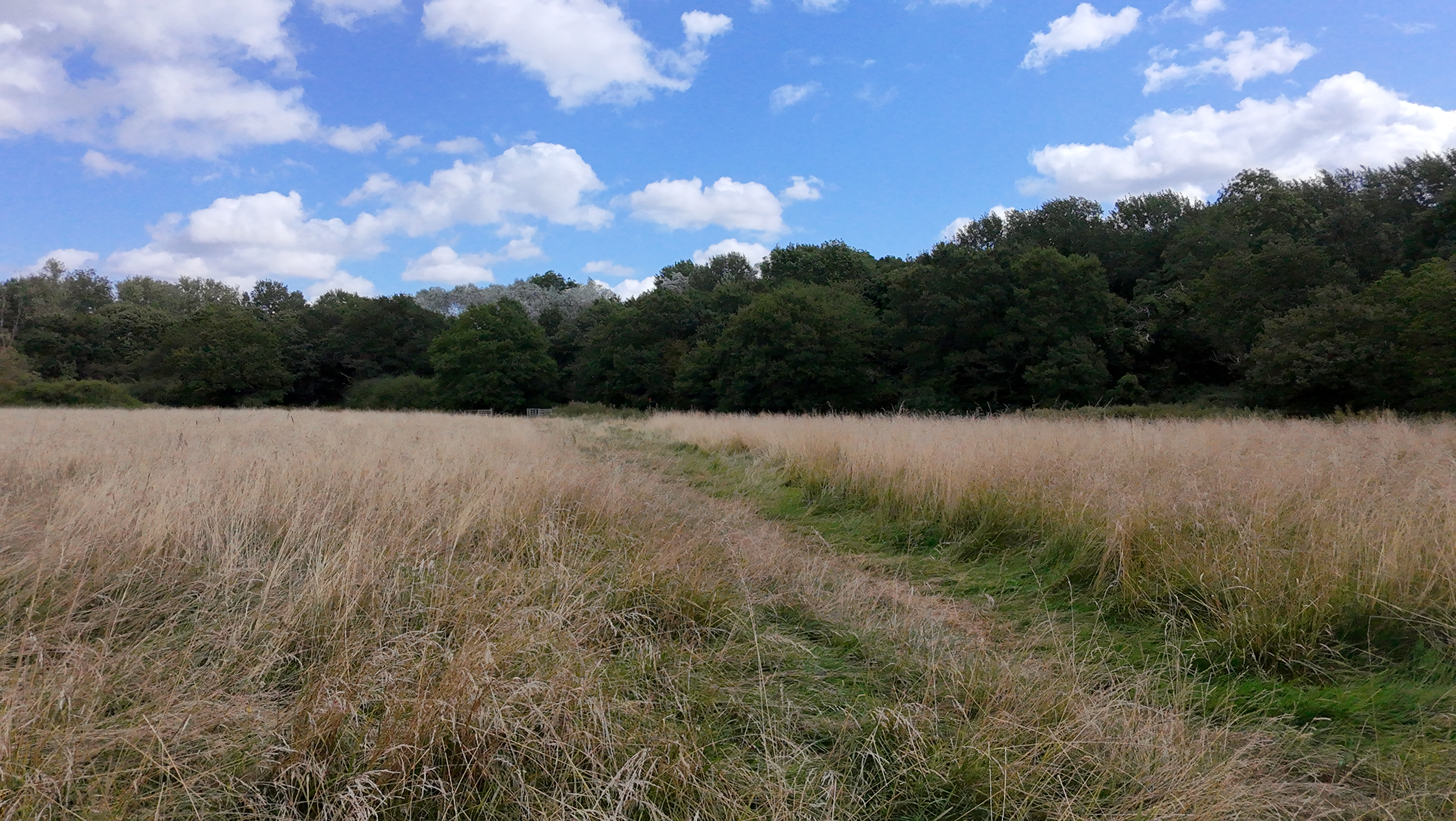
DJI Neo: Video Performance
It's important to remember that, while the drone has a 1-axis gimbal, all the other image stabilization is being handled in software, so evidence of electronic image stabilization is present in the video.
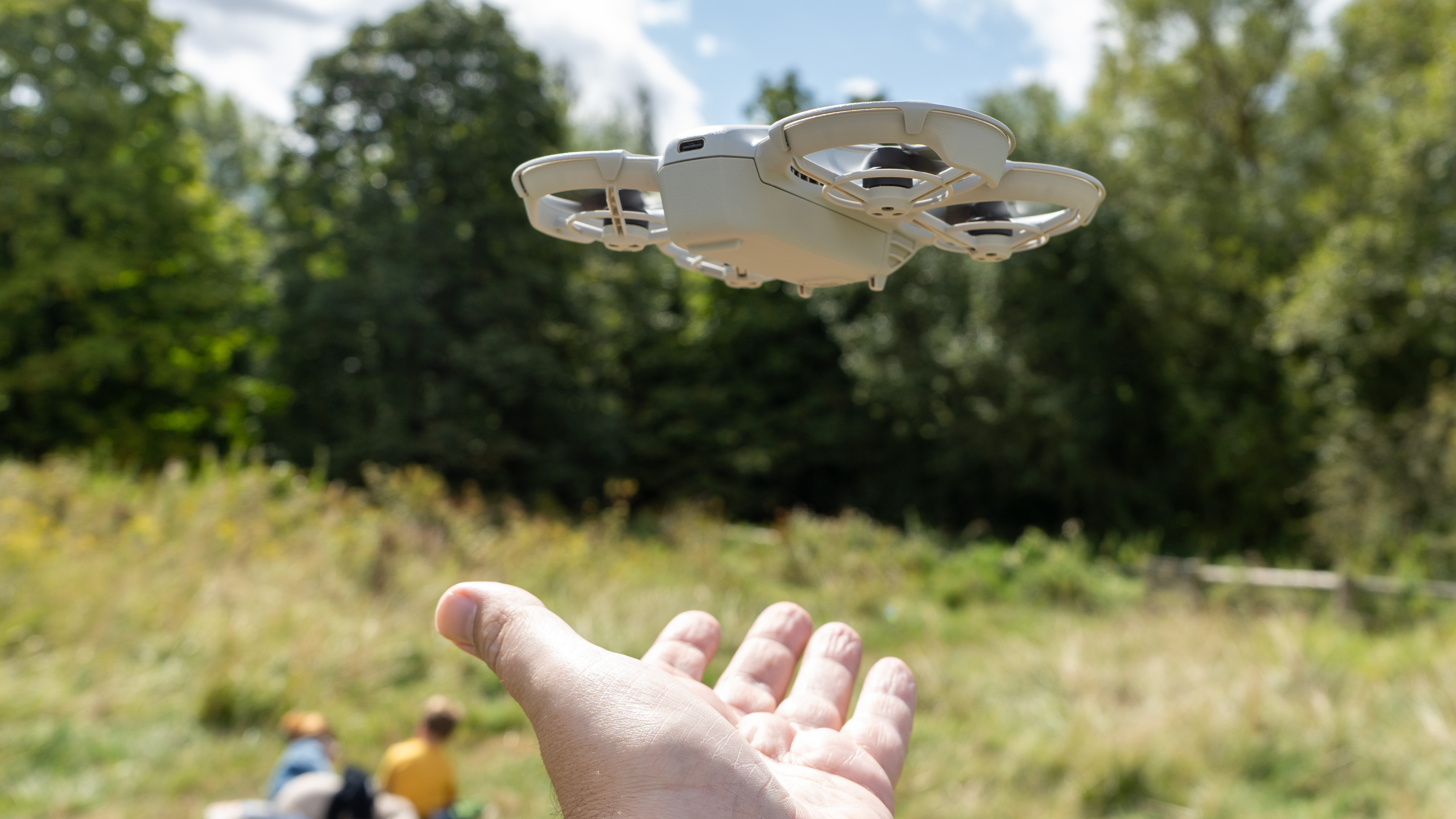
DJI Neo: Verdict
The DJI Neo isn't perfect. Leaving aside a few software issues – some which will very likely resolve themselves in the coming weeks – the drone is, superficially at least, just a bit boring to look at, especially given the innovative device it seeks to unseat.
Scratch the surface, though, and all the pieces come together with a logic that is difficult to argue with. The robustness will, inevitably, be useful. The batteries are easily swapped and provide a surprisingly good flight time for a drone so far below the maximum weight. Moreover the flexibility for those who want this to be the beginning of their FPV journey is surprising – even though the price of the drone will not be the biggest expense if you're planning on adding goggles and a controller.
Sadly I wasn't able to test the FPV features, though I was able to control the drone using the remote and good old-fashioned eyesight, and it was clear to me that – while it wouldn't be as fun or fast as the DJI Avata 2 – it presents a great way to experience the controls at lesser risk.
There are dangers in trying to be all things to all people. DJI get away with it here because there is a lot for everyone, and you don't need to lay down all your cash to get the piece of the action you want.
| Features | Despite the low weight, the drone boasts GPS and full radio control as well as short-range wi-fi and bluetooth. The fact it even boasts FPV is outstanding. | ★★★★★(?) |
| Design | The drone is not beautiful, or especially revolutionary, but it is very sensible in its design, with a protected camera, swappable batteries and | ★★★★☆ |
| Performance | The video is good, but won't compete with heavier drones, while the AI can be tricked into losing its subject. As a selfie drone, it's at the beginning of its journey (but one suspects firmware updates will keep it moving). | ★★★☆☆ |
| Value | The value proposition is this drone's unarguable winning point. While a pure 'follow-me' device might be a stretch for many, the flexibility on offer here is unarguable. | ★★★★★ |
✅ Buy this if...
- You want a drone with the smarts to follow you
- You might want to try everything, from manual control to FPV
- You want something safe for the kids to enjoy
🚫 Don't buy this if...
- You're looking for high-fidelity photo and video
- You want a drone with long flight times and maximum range
- You
Alternatives
The HoverAir X1 beat the DJI to the market and uses a similar one-axis camera principle and front button to capture selfie videos/images. The design is a little more suited to this role with a brilliant book-folding design, but the only manual control option is via the app.
The DJI Mini 4K is a more traditional folding drone I usually recommend for beginners. It's still modestly priced, but has a 3-axis gimbal so is able to capture better photos and videos. That comes at the expense of exposed propellers and the need to take control via the remote (which is included).

With over 20 years of expertise as a tech journalist, Adam brings a wealth of knowledge across a vast number of product categories, including timelapse cameras, home security cameras, NVR cameras, photography books, webcams, 3D printers and 3D scanners, borescopes, radar detectors… and, above all, drones.
Adam is our resident expert on all aspects of camera drones and drone photography, from buying guides on the best choices for aerial photographers of all ability levels to the latest rules and regulations on piloting drones.
He is the author of a number of books including The Complete Guide to Drones, The Smart Smart Home Handbook, 101 Tips for DSLR Video and The Drone Pilot's Handbook.
